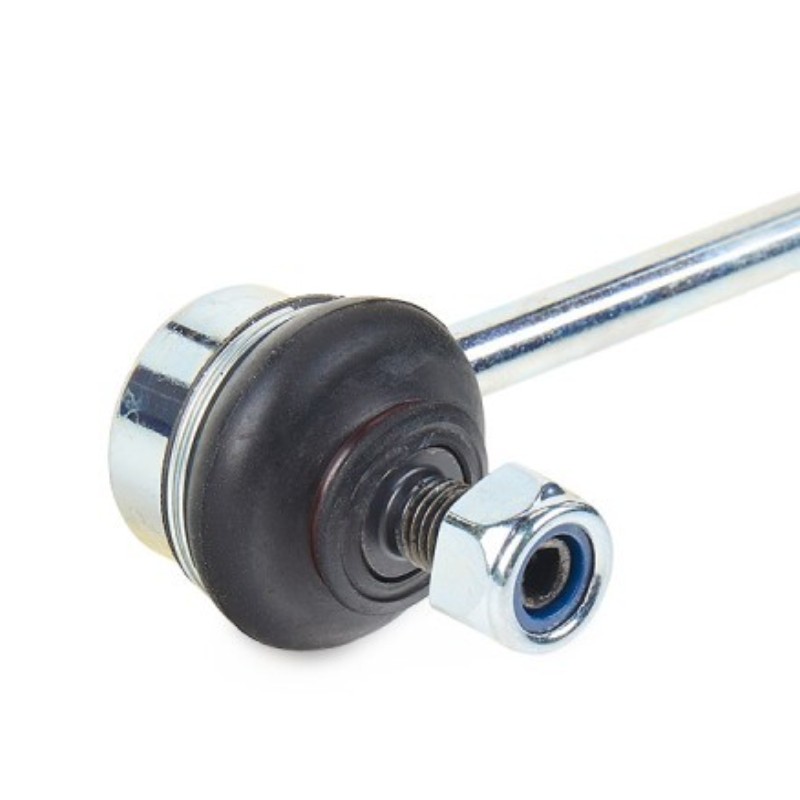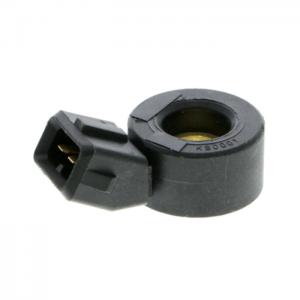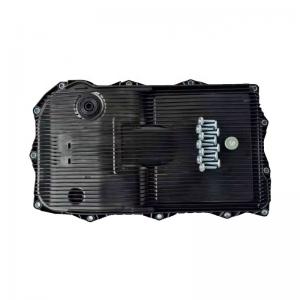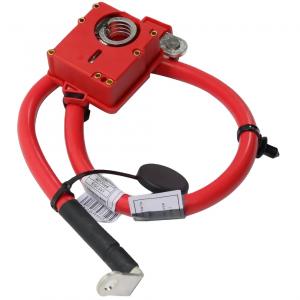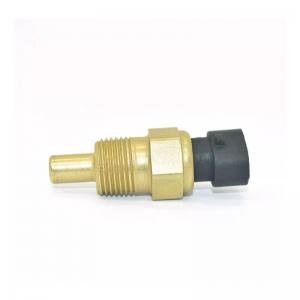Anti-roll bar link
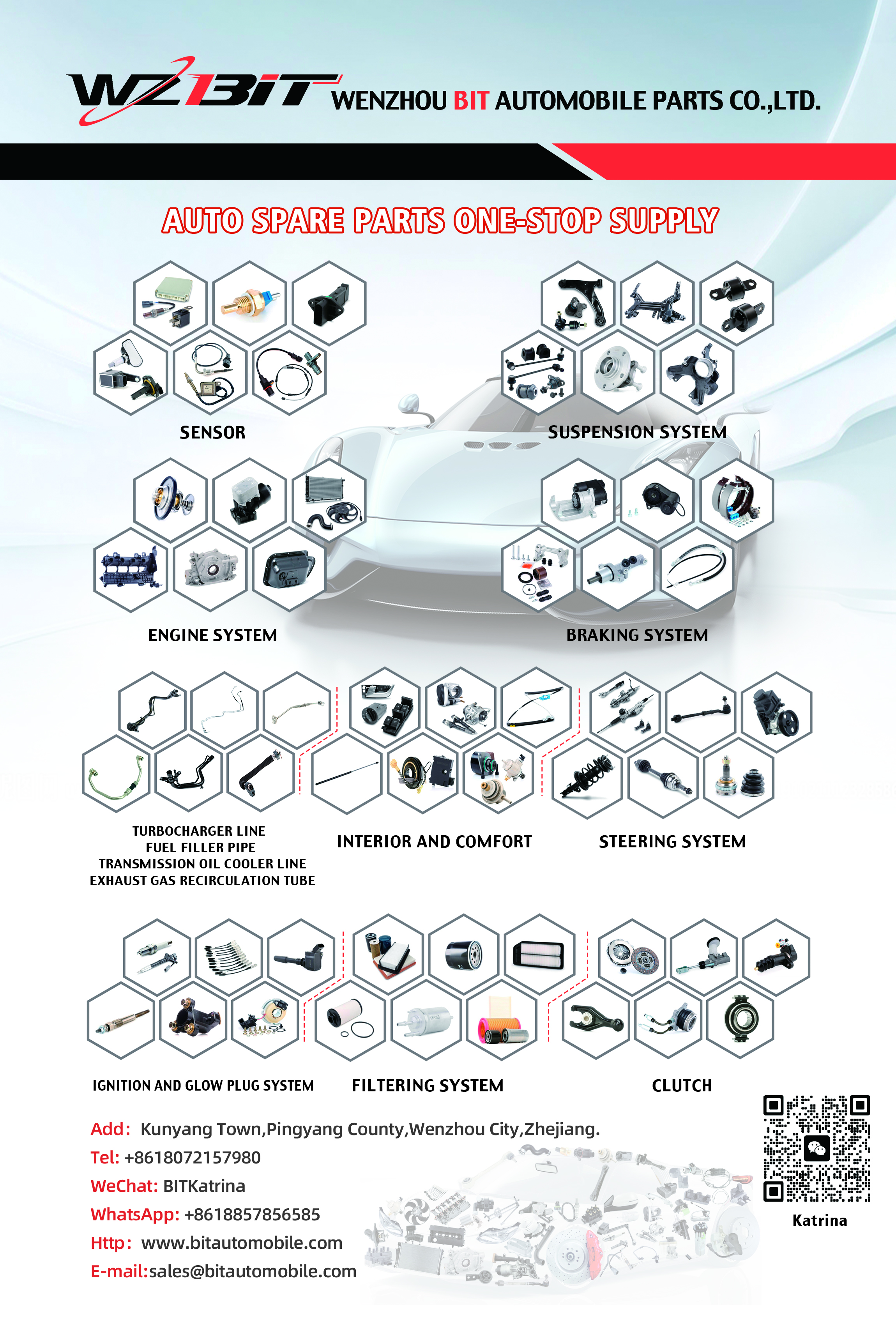
Anti-roll bar links, also known as sway bar links or stabilizer bar links, are crucial components in a vehicle's suspension system designed to connect the anti-roll bar (sway bar) to the suspension components.
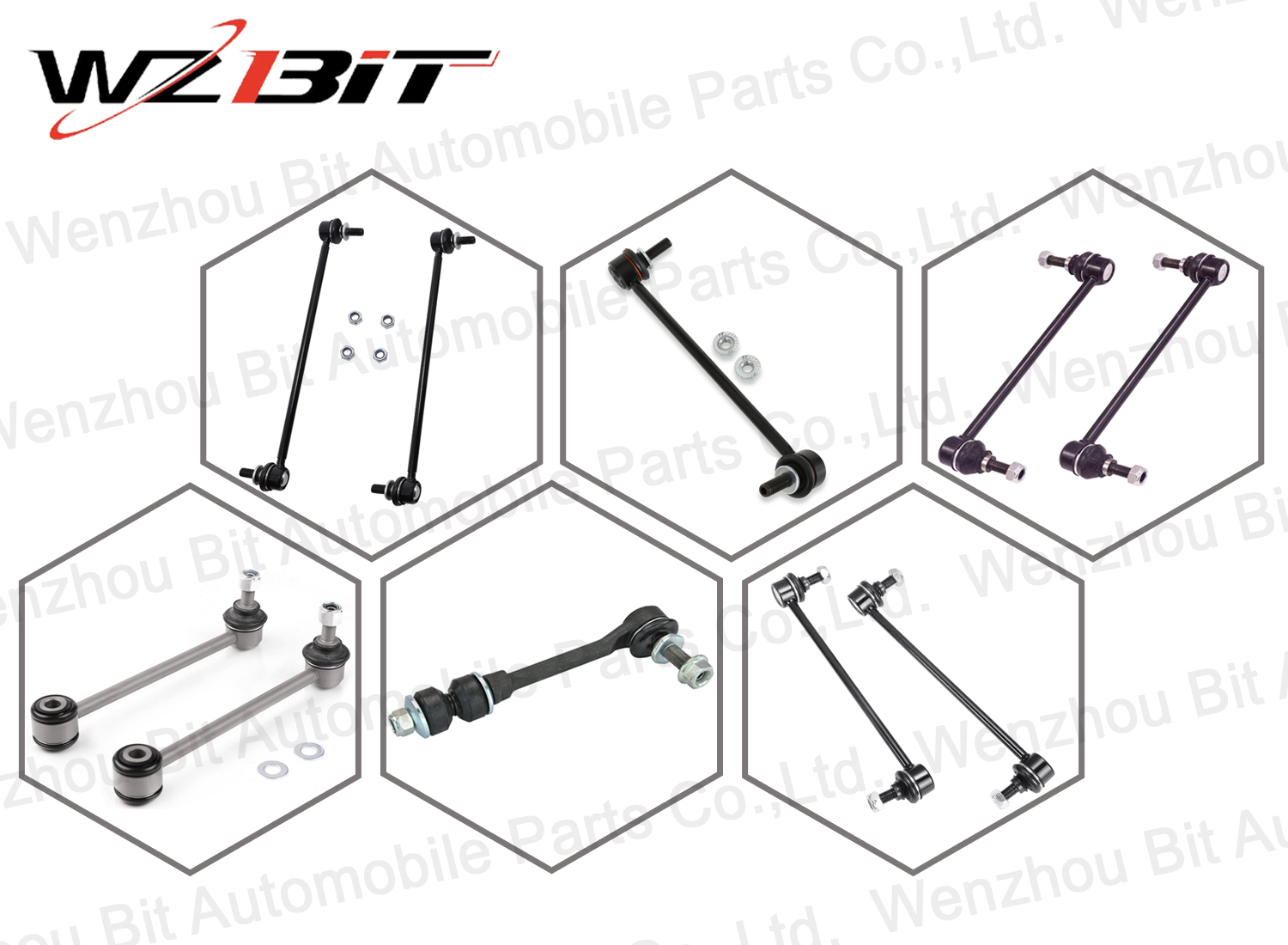
Their primary function is to reduce body roll during cornering by transferring forces between the suspension and the anti-roll bar. This improves stability, handling, and overall vehicle control.
OE Number
6Q0411315G
6Q0411315Q
6Q0411315L
6C0411315C
6Q0411315B
6R0411315B
6Q0411315P
6Q0411315J
6Q0411315E
2Q0411315
6R0411315A
2Q0411315B
6Q0411315H
6Q0411315D
6Q0411315
2Q0411315A
6Q0411315N
8Z0411315D
6Q0411315C
6C0411315A
6R0411315
6Q0411315M
6Q0411315F
6Q0411315A
6C0411315
Compatible Applications
AUDI A1 Citycarver (GBH) (Year of Construction 07.2019 - ..., 95 - 150 PS, Petrol)
AUDI A1 Hatchback (8X1, 8XK) (Year of Construction 05.2010 - 10.2018, 82 - 256 PS, Diesel, Petrol)
AUDI A1 Sportback (8XA, 8XK) (Year of Construction 09.2011 - 10.2018, 82 - 231 PS, Diesel, Petrol)
AUDI A1 Sportback (GBA) (Year of Construction 07.2018 - ..., 95 - 200 PS, Petrol)
AUDI A2 (8Z0) (Year of Construction 02.2000 - 08.2005, 61 - 110 PS, Diesel, Petrol)
SEAT Arona (KJ7) (Year of Construction 07.2017 - ..., 90 - 150 PS, Diesel, Petrol, Petrol/Natural Gas (CNG))
SEAT Córdoba II Saloon (6L2) (Year of Construction 09.2002 - 11.2009, 64 - 131 PS, Diesel, Petrol)
SEAT Ibiza III Hatchback (6L) (Year of Construction 02.2002 - 11.2009, 60 - 180 PS, Diesel, Petrol)
SEAT Ibiza IV Hatchback (6J5, 6P1) (Year of Construction 03.2008 - ..., 60 - 150 PS, Diesel, Petrol, Petrol/Petroleum Gas (LPG))
SEAT Ibiza IV Sportcoupe (6J, 6P) (Year of Construction 06.2008 - ..., 60 - 192 PS, Diesel, Petrol, Petrol/Petroleum Gas (LPG))
SEAT Ibiza IV ST (6J8, 6P8) (Year of Construction 03.2010 - ..., 60 - 150 PS, Diesel, Petrol)
SEAT Ibiza Sportcoupe Box Body / Hatchback (6J1) (Year of Construction 04.2008 - 05.2015, 69 - 90 PS, Diesel, Petrol)
SEAT Ibiza V (KJ1) (Year of Construction 01.2017 - ..., 65 - 150 PS, Diesel, Petrol, Petrol/Natural Gas (CNG))
SEAT Mii (KF1) (Year of Construction 10.2011 - ..., 60 - 75 PS, Petrol, Petrol/Natural Gas (CNG))
SEAT Toledo IV Hatchback (KG3) (Year of Construction 07.2012 - ..., 75 - 125 PS, Diesel, Petrol)
SKODA Citigo Hatchback (Year of Construction 10.2011 - ..., 60 - 75 PS, CNG, Petrol)
SKODA Fabia I Combi (6Y5) (Year of Construction 04.2000 - 12.2007, 50 - 116 PS, Diesel, Petrol)
SKODA Fabia I Hatchback (6Y2) (Year of Construction 08.1999 - 03.2008, 50 - 130 PS, Diesel, Petrol)
SKODA Fabia I Praktik (6Y5) (Year of Construction 01.2000 - 12.2007, 54 - 101 PS, Diesel, Petrol)
SKODA Fabia I Saloon (6Y3) (Year of Construction 10.1999 - 12.2007, 50 - 116 PS, Diesel, Petrol)
SKODA Fabia II Combi (545) (Year of Construction 10.2007 - 12.2014, 60 - 180 PS, Diesel, Petrol, Petrol/Petroleum Gas (LPG))
SKODA Fabia II Hatchback (542) (Year of Construction 12.2006 - 12.2014, 60 - 180 PS, Diesel, Petrol, Petrol/Petroleum Gas (LPG))
SKODA Fabia III Estate (NJ5) (Year of Construction 08.2014 - ..., 60 - 110 PS, Diesel, Petrol)
SKODA Fabia III Hatchback (NJ3) (Year of Construction 08.2014 - ..., 60 - 125 PS, Diesel, Petrol)
SKODA Rapid Hatchback (NH3) (Year of Construction 07.2012 - ..., 75 - 125 PS, Diesel, Petrol, Petrol/Petroleum Gas (LPG))
SKODA Rapid Saloon (NA2) (Year of Construction 10.2011 - ..., 105 PS, Petrol)
SKODA Rapid Spaceback (NH1) (Year of Construction 07.2012 - ..., 75 - 125 PS, Diesel, Petrol, Petrol/Petroleum Gas (LPG))
SKODA Roomster (5J) (Year of Construction 03.2006 - 05.2015, 64 - 105 PS, Diesel, Petrol, Petrol/Petroleum Gas (LPG))
SKODA Roomster Praktik (5J) (Year of Construction 03.2007 - 05.2015, 70 - 90 PS, Diesel, Petrol)
VW Ameo (631) (Year of Construction 05.2016 - ..., 75 PS, Petrol)
VW Fox Hatchback (5Z1, 5Z3, 5Z4) (Year of Construction 08.2003 - 08.2014, 55 - 101 PS, Diesel, Petrol, Petrol/Ethanol)
VW load up! Van (121, 122, BL1, BL2) (Year of Construction 12.2014 - ..., 60 - 90 PS, Electric, Petrol, Petrol/Natural Gas (CNG))
VW Polo III Classic (6V2) (Year of Construction 11.2002 - 07.2006, 101 PS, Petrol)
VW Polo IV Hatchback (9N) (Year of Construction 10.2001 - 10.2014, 54 - 180 PS, Diesel, Petrol, Petrol/Ethanol, Petrol/Petroleum Gas (LPG))
VW Polo IV Saloon (9A4, 9A2, 9N2, 9A6) (Year of Construction 09.2002 - ..., 64 - 120 PS, Diesel, Petrol, Petrol/Ethanol)
VW Polo IV Saloon (9N4) (Year of Construction 07.2003 - 12.2010, 101 PS, Diesel)
VW Polo V Hatchback (6R1, 6C1) (Year of Construction 03.2009 - ..., 60 - 230 PS, Diesel, Petrol, Petrol/Petroleum Gas (LPG))
VW Polo V Saloon (602, 604, 612, 614) (Year of Construction 05.2010 - ..., 85 - 125 PS, Diesel, Petrol)
VW Polo VI (AW1, BZ1) (Year of Construction 06.2017 - ..., 65 - 200 PS, Diesel, Petrol, Petrol/Ethanol, Petrol/Natural Gas (CNG))
VW T-Cross (C11_) (Year of Construction 12.2018 - ..., 95 - 150 PS, Diesel, Petrol)
VW up! Hatchback (121, 122, BL1, BL2) (Year of Construction 08.2011 - ..., 60 - 115 PS, Electric, Petrol, Petrol/Ethanol, Petrol/Natural Gas (CNG))
VW Voyage (5U4) (Year of Construction 07.2008 - ..., 76 - 101 PS, Petrol/Ethanol)
Construction
Anti-roll bar links typically consist of:
- Metal Rod: A sturdy metal rod that connects the anti-roll bar to the suspension components, such as the control arms or struts.
- Ball Joints or Bushings: Ends of the rod often feature ball joints or bushings that allow for articulation and flexibility as the suspension moves.
- Nuts and Bolts: Fasteners that secure the links to both the anti-roll bar and the suspension components.
Operation
1. Body Roll Reduction: During cornering or uneven road conditions, the anti-roll bar links transfer the lateral forces from one side of the vehicle to the other through the anti-roll bar. This helps to minimize body roll and maintain tire contact with the road.
2. Enhanced Stability: By stabilizing the vehicle's chassis and reducing sway, anti-roll bar links improve stability, particularly in sharp turns and sudden maneuvers.
3. Steering Response: They contribute to more responsive steering by reducing the tendency of the vehicle to lean excessively, enhancing overall handling and driver control.
Importance
- Safety: Anti-roll bar links play a critical role in improving vehicle stability and reducing the risk of rollover during aggressive maneuvers.
- Comfort: By minimizing body roll, they enhance passenger comfort by providing a smoother and more predictable ride.
- Longevity: Properly functioning anti-roll bar links help extend the lifespan of other suspension components by reducing stress and wear during driving.
Maintenance
Regular inspection and maintenance of anti-roll bar links are essential for optimal suspension performance:
- Visual Inspection: Check for signs of wear, such as loose or damaged ball joints, worn bushings, or rust on the metal rod.
- Functionality Check: Listen for clunking or rattling noises when driving over bumps or during turns, which may indicate worn or damaged links.
- Replacement: If anti-roll bar links show signs of wear or damage, they should be replaced promptly to maintain vehicle stability and safety.
Replacement
When replacing anti-roll bar links, follow these steps:
1. Lifting the Vehicle: Safely raise and support the vehicle using jack stands.
2. Removing the Old Links: Disconnect the nuts or bolts securing the links to the anti-roll bar and suspension components.
3. Installing the New Links: Attach the new anti-roll bar links, ensuring they are properly aligned and securely fastened.
4. Testing: Lower the vehicle and test drive to ensure the new links function correctly, with no abnormal noises or handling issues.
Summary
Anti-roll bar links are essential components in a vehicle's suspension system, contributing to stability, handling, and safety by reducing body roll during cornering. Regular inspection and timely replacement of worn or damaged anti-roll bar links are crucial for maintaining optimal suspension performance and ensuring a safe and comfortable driving experience.
Send your message to us:




